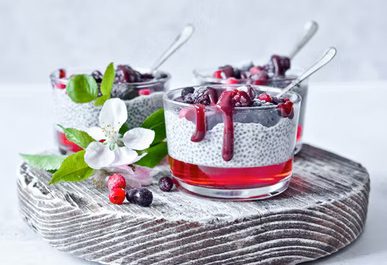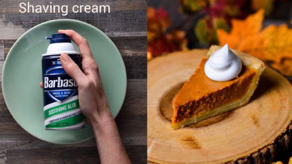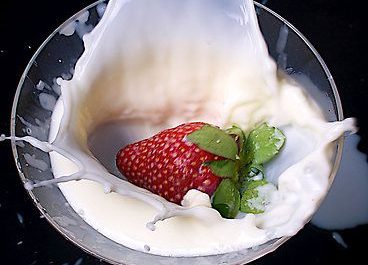Commercial Food Photography is the photography that is used for marketing food for selling.
Dish photography is currently trending in the same direction as the food itself: natural is better. Food stylists and industrial photographers, on the other hand, have depended on a variety of tactics to make the final photographs shine for years—many of which render the delectable subjects inedible.
Food photography, like all other types of photography, has a variety of genres and levels, ranging from shooting with restaurants to photographing for McDonald’s.
In terms of aesthetics, the genre is presently undergoing a significant transformation, with a tendency toward more graphical and pop art-type photos, when previously, the more rustic look was very much in vogue. Their work tends to be bold and graphic in nature.
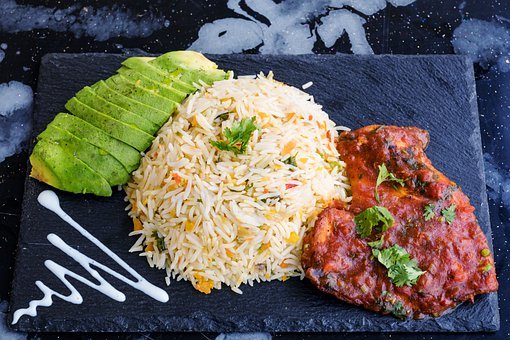
When creating food menus for a restaurant or any other food establishment, you will certainly need food photographs that induce an appetite to lure customers into ordering the dish or meal. This is when commercial food photography comes into play. You may engage commercial food photographers and food stylists to create mouth-watering photographs of your dishes and meals that will make your consumers drool, and your business or location prosper.
What is Commercial Photography?
Said, commercial photography is a type of photography that makes food photos to produce money for the end-user. As a professional photographer, you will shoot products or individuals with the purpose of selling a product or service.
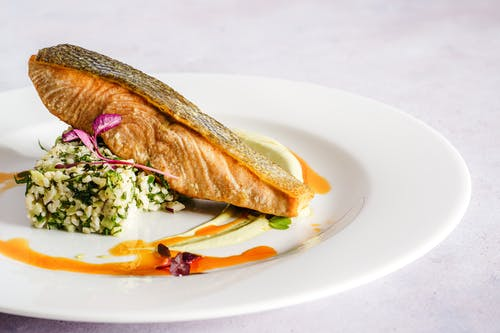
You could be photographing fashion models in fancy clothing for an advertisement food photos, someone glancing on a computer to market a business or anything else that would appear on a professional website, literature, or advertisement. It’s actually quite tough to come up with a term for commercial photography.
Some argue that it only relates to advertising photography of food photos, while others argue that it also applies to catalog and e-commerce photography.
Purpose of Commercial Food Photography?
According to a recent survey, 45 percent of diners deliberately search for food photos on a restaurant’s website before picking where to eat. When we look at younger diners, especially Gen Z and Millennials, this number rises. Food photography is one of the most potent tools brands have at their disposal when it comes to advertising in this day and age. It can be a deciding factor in gaining new clients when handled appropriately.
The purpose of commercial or professional food photography food photographers is to promote businesses, products, and services. Professional photographers, such as Keith Barnes Photography, are professionals at capturing food photos of you, your company, your products, and your services in the best possible light to showcase your vision and sales pitch. Commercial shooters will have a strong grasp of people and business markets, as well as the ability to capture the ideal image to make a lasting impression by food photographers.
A lovely image isn’t always a good commercial image or food photos. Exceptional photos do not necessarily elicit the desired reaction. One of the commercial photographer’s skillsets is this.
They will work hard to grasp your brief, your company, your products, and your vision in order to catch an impression that will effectively advertise you.
Restaurants, food corners, online food stores or food delivery services like Swiggy and Zomato rely on commercial food photography because what appears tasty sells well. The clients of a commercial food photographer would want their dishes to look delicious on the picture present on their website, outlet banner, pamphlets, menu card, etc. Commercial food photography is a powerful pillar for most food companies, brands, restaurants, or food services.
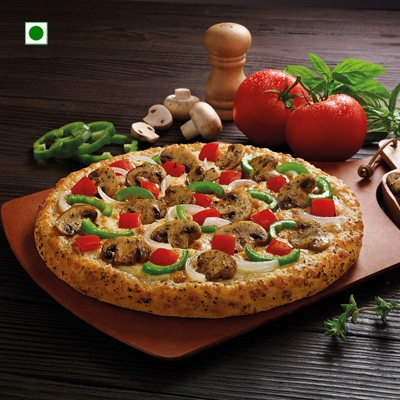
Commercial Food Photography is a subcategory of a commercial photographer whose work appears in commercials, periodicals, packaging, menus, and cookbooks. An art director, a photographer, a food stylist, a prop stylist, and their helpers are frequently involved in professional food photography.
Food photography is frequently – and sometimes controversially – used in advertising to emphasize the attractiveness or size of advertised foods, particularly fast food.
Like all other types of photography, food photography has a variety of genres and levels, ranging from working with restaurants to shooting for McDonald’s. In terms of aesthetics, the genre is undergoing a significant transformation, with a tendency toward more graphic and pop art-type photos, when previously, the more rustic look was very much in vogue.
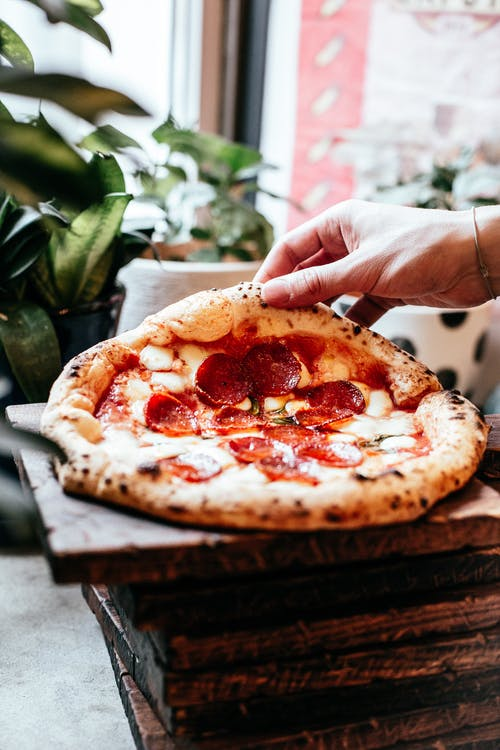
In this article, we will discuss the actual work of commercial food photographers and how they can become great professional commercial food photographers.
Who needs Commercial Food Photographers?
If you are a newbie in this genre of food photography, then you need to know who your target clients can be. You may not get many commercial food photography clients in your initial days; if such a thing happens with you, there is nothing to be worried about.
The way you present your company is critical to its success. If you believe you can save money on advertising by taking your own photos, think again. Professional photographs will portray your company in a professional light. Some food photographers firms utilize generic photos from a variety of online sources for some of their images, but these don’t reflect the soul of your company.
While generic photographs might save money and serve as fillers, expert images of you and your brand are required to promote what makes you special. Photographs for your websites are vital since they help customers get to know you, your staff, and the products you sell.
When it comes to generating a good first impression, images are crucial. After all, a picture is worth a thousand words. Professional photos are a valuable asset no matter what you’re selling.
You can start with the local restaurants. You can DM on their Instagram or Facebook pages. Or, at the time, you may simply walk in and say, “Hey! Would you like to get some commercial food photographs for your store?”
Trust me; there is no space for shyness in the story.
There are a few exceptions; most brands have a marketing department that employs and collaborates with an advertising agency.
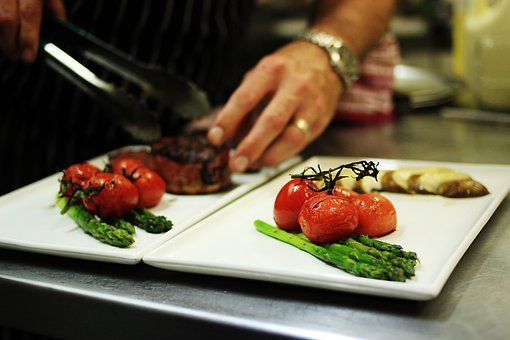
The suits and creatives pitch to the brand, and once approved, the art buyer at the agency will ask the photographers’ agents to create treatments for the project, after which they will request an estimate and determine whether or not to work with you.
By the time I’m involved, the image’s final design has usually been agreed upon, and they’re just seeking the proper photographer to transform their vision into a reality.
How would you get work as a Commercial Food Photographer?
To get work as a commercial food photographer any kind of photographer the most important thing that you would need will be a food photography portfolio. It will help you to promote yourself.
Marketing is the key behind all the growing businesses.
Professional food photographers promote their food photography skill in the form of e-cards, physical postcards, website updates, and fresh image uploads to agents’ websites.
Food photography is something which holds the power to make the customers crave for it.
- You should have your Food Photography Website- You must have a food photography website if you are or want to become a commercial food photographer. This notion applies to all types of food photographers and not only commercial food photographers. It is no longer an option not to have a food photography portfolio website.
- It would help if you took advantage of Social Media- The way you present your originality as a commercial food photographer is crucial to your success. Publicizing on social media is great and necessary, but it needs a cherry on top.
In social media, design, layouts, and branding are limited. The food photography portfolio website is required to exhibit your work in the best possible light and take full advantage of technology.
Use a combination of social media and your portfolio website to attract clients. Your social media network can help your website gain more visitors.
- Create your Food Photography Tear Sheets- Create your food photography Tear Sheets. Tear sheets are proof that You have worked as a professional food photographer and were acknowledged professionally. Even if you start doing some sponsored posts, you should start making the tear sheets as well. This will open up more opportunities for you to get hired as a commercial food photographer.
How do Commercial Food Photographers Shoot?
The number of photo shoots that take place each week varies greatly. We occasionally have nothing to do for a few weeks. We are sometimes so overworked that we work straight through the weekend, with overnight revisions for deliveries.
Who is involved in Commercial Food Photography?

We usually work in groups during a food session, similar to how we do with fashion photography. The creative director and their crew would be present on set, usually providing sign-offs and, of course, creative direction.
There will be someone for set building, prop styling, a food stylist, and sometimes an assistant (or perhaps a team of food stylists) depending on the delivery requirements and a home economist if there is a lot of prep and cooking.
And that’s pretty much how you must deal with the profession. It can be very sluggish at times, and at other times, it can be so intense that it becomes overwhelming – much like any other type of photography.
How much can you charge as a commercial Food Photographer?
If you are new to commercial food photography, you should measure your cost very carefully. You should be aware that if you charge more than the chances of getting hired would be lowered.
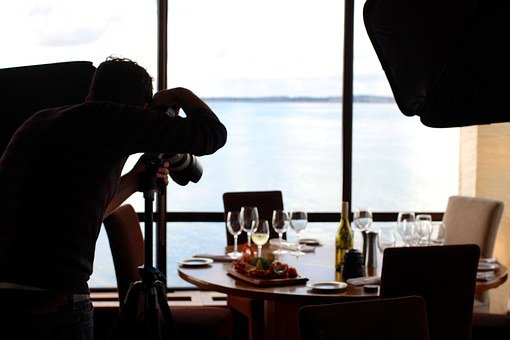
So, to start with, keep your price low to get more contracts, who will look into your price and not experience. However, this does not mean that you will work casually if someone pays you less. It would help if you delivered the job with equal efforts because one client would lead to another.
Once you get established as a commercial food photographer, you can surely put up your price list.
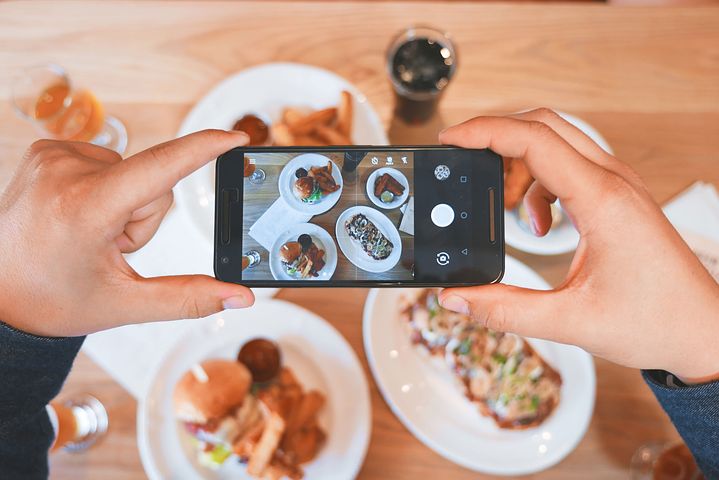
The average cost of commercial food photography can be between Rs. 7500 to Rs. 25000+ per shoot in India. Or you may also charge on per hour basis, but that is only after you have done some shoots and gained experience.
Compared to small restaurants, there are fewer big jobs available, but there is also less competition, and you need to work significantly fewer days to make a good life. As with most genres, there are horses for courses.
Calculate your expenses, add your intended income, and divide that number by the number of sessions you want to complete in a year to determine how much you should charge.
What Camera Gears do you need for Commercial Food Photography?
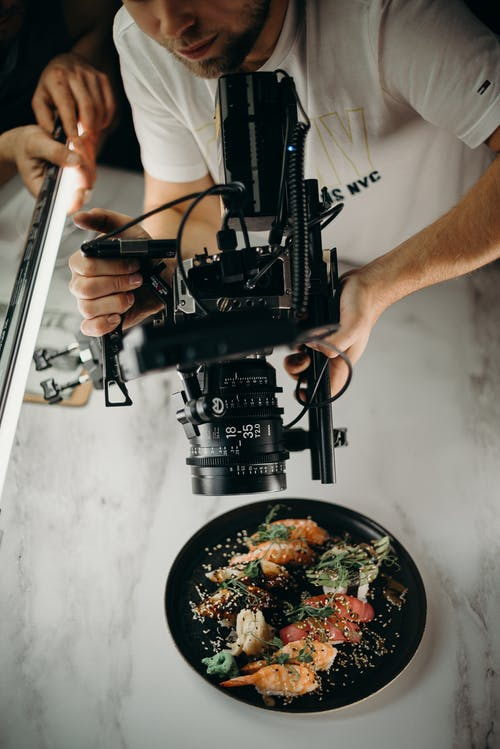
Lights, camera and food photography backdrops are what you essentially need for food photography.
Great colors, excellent resolution, and stability are the major requirements for most of us regarding image quality. As a result, cameras with many focusing points and high frame rates or ISO capabilities are not in high demand. Instead, we would seek cameras with a high colour bit depth, 50-100 megapixels, and good rendition and colour reproduction lenses. If anything is moving, a fast pack with a high t0.1 score is quite useful, and most major brands provide these alternatives.
If the environment is very static, we typically demand lights with at least 1,600 watts of electricity per head, as the way we adjust light can quickly deplete those watts. I usually work with a high-resolution camera. For example, you can use a Canon DSLR and Carl Zeiss optics with Broncolor lights, and you can also rent a Phase One system for large campaigns. However, due to their excellent optics, Hasselblad appears to be highly popular in the field.
Here we have discussed a lot about commercial food photography, and we have almost got an idea of how it is done and what things you should keep in mind if you are a newbie in the industry. So before ending this article, let us look into some of the great tips on doing commercial food photography. These tips have been exclusively curated by our team of professional commercial food photographers.
Some Commercial Food Photography Tips
- Go with Natural Light- Food photography is moving away from glossy, highly stylized still life and toward a more genuine, “dressed down” aesthetic. Looking at leading food blog feeds, where the photography tends to be more approachable and personable, is a fantastic way to acquire a sense of this type of contemporary food photography.
To produce delicious photographs, you don’t need an elaborate studio setup or a large budget; instead, use a simple softbot or—even better—find a room at home with wonderful, natural light and soften it with drapes.
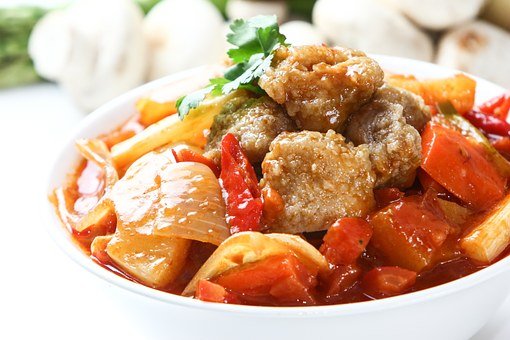
Natural ingredients styling is also becoming more popular, so don’t feel obligated to catch the “ideal” look. Consider integrating touches like a scattering of breadcrumbs or a dash of lemon for a “messy chic” vibe. These “perfectly imperfect” details can give your images a warm, lived-in feel and give them a personal touch.
If you happen to be in a well-lit restaurant or cafe, take advantage of the opportunity to take some images for your Licensing portfolio by food photography tips also. When natural light falls on your background or objects for food styling, it can make them as bright as or even brighter than your topic. Because the spectator will always look at the brightest place in your shot first, it can detract from the entire story if it isn’t your subject.
You can use your black cards to keep light away from areas of stunning food photos of vegan recipes also where your subject will compete. This is also an important technique for food photographers achieving a darker, low-key look in images.
- Do not ignore the artificial lights- Everywhere, you may not get the natural lights, especially in warm-lit restaurants or in the night shoot. You have two options here- either you can either use the dark light and bring out a dark theme food photography, only if it matches your dish.
Or you can use artificial lights. It’s the fact that food photography encompasses so much more than just-food. It’s also important to consider the environment and context. Consider putting people in your images of people eating, whether it’s a hand selecting fresh fruits from a grocery shop or a group of friends passing plates around the table.
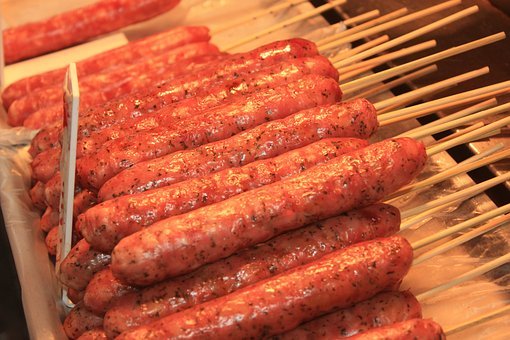
Natural light is preferred by some photographers because it produces the greatest results. Other photographers choose artificial light because it provides consistent lighting and colour temperature throughout the photography, saving them time in post-production.
Furthermore, ambient lighting in food presentation and food photography tips allows them to be more flexible in regards to time, as they are not bound by the hours when they must take photographs.
If you must use artificial light, avoid using a direct flash or, even worse, tungsten light from above. Purchase a high-quality flash as well as a mirror or reflect card.
Never point the flash at the food backdrop because the light will be harsh and the dish will lose all of its nuances, making it appear flat and uninteresting. The best technique to reflect the lights to the meal is to utilize a reflector.
To evaluate which views, camera settings, and light intensity work best for each food shot, play around with the perspectives, camera settings, and light intensity.
Lighting is the most critical aspect of food photography and food styling to understand first, as it can make all the difference in your images.
A simple home-cooked lunch with family might be the ideal setting for capturing immersive images of people making and eating food.
Bring in some action- The good food photography must be without a camera shake or has been heavily edited to bounce light over all food images and also to food lovers.
Photographs would make the cuisine appear phony, and the food’s authenticity would be compromised. As much as is required taking photos, provide it. According to a recent survey, well over half of Americans (53%) identify as “foodies.” Food is now an experience to be relished from beginning to end, starting with the fresh foods and concluding with a nice meal for today’s consumers.
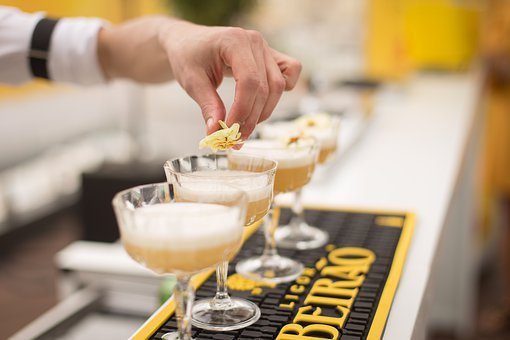
A professional food picture shoot or taking photos can be done in the comfort of your own home, in your living room and kitchen.
Prepare a shooting list of high all from selecting ingredients to slicing vegetables to plating the dinner before you begin. Raw cookie dough or homemade pasta photographs taken behind the scenes can be just as dramatic as the final shot.
Overcooking might impair the colour and “juiciness” of your meals on camera, so you’ll want to try preparing your food a bit less than usual. You may always put it back in the oven when you’re done shooting before eating it.
Remember to buy additional ingredients as well these food photography tips can be used as lovely props or garnishes even after you’ve finished cooking.
- Try to induce Story Telling- Try to set up your dish in the form of a story. Not the story of fairies or demons but the story through the spoons, spices, and ingredients. Shooting after the food has been prepared is a bad idea because you’ll miss out on a lot of nice photo opportunities during the cooking photography process.
Start far earlier, whenever the components are being prepared, rather than after the food has been cooked! When things are cooked, they don’t always look great (think of boring soup, pasta with white sauce, or brown dishes like chili, beans, or stuffing).
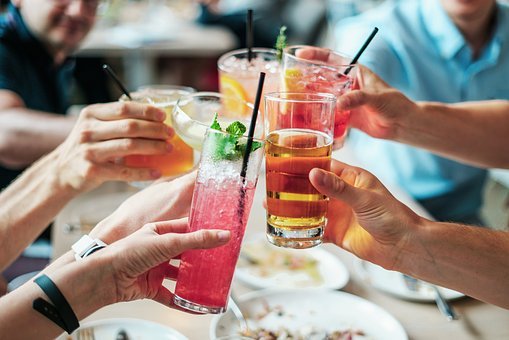
A very little garnish can sometimes help, but if it still appears flat and dull, you can try photographing the cooking process. It’s all about the looks of the food in food photography tips, so make sure everything is in tip-top shape. To save yourself time and effort, just utilize the freshest ingredients. At times, raw or half-cooked components appear to be more appealing than the finished dish.
- Be fast and use props- hen it comes to food photography, you must be quick. Chefs are always quick, so they can put together whatever you need in a matter of minutes. As a result, you must be quick to catch up with them.
Furthermore, if you are shooting in a restaurant during peak hours, it won’t be easy to keep the location, chef, and crew occupied for an extended period.
You cannot leave the meal unattended any longer.
You must shoot with the smoke if you are shooting a hot item. This also applies to cold beverages like ice cream.
Props and style, like little cosmetics, can make or break a photoshoot exactly the look you want with window light or natural lighting for great shots with inexpensive lens to make it a creative professionals looking.
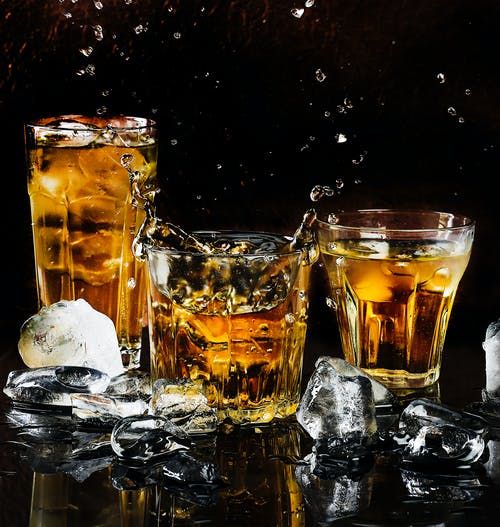
Food photography may appear simple, but styling is anything but. The effective way to accomplish this, especially with the props, is to make it simple and tidy. Because the dish should be the major focus of the photograph, avoid using dishes and tableware that could potentially detract from the cuisine, no matter how lovely they are.
Make your props and backdrops neutral, and let the food take centre stage.
Because close-up images or taking photos will be taken, ensure the plate or dish, as well as all the utensils, is spotless. Don’t let even a drop of liquid or a crumb get on your props (unless you deliberately do that for style). You may add picture printing items to your photography tips to make your props look so much better in the shot and come up with innovative beautiful prop ideas.
- Add foodie touch with minimalism- Experimenting with simplicity can help you sharpen your eye while also adding contrast to your collection; take some of your favorite meals and props from your photos and place them on some plain, seamless backgrounds.
To give a bit of “pop” to your compositions, stick to a clean colour palette with only two or three hues while working with minimalism. Bold, rich hues are favoured right now, as are serene, calming tones like Pantone’s “Classic Blue.”
Remember to leave enough negative space surrounding and between your dishes and objects so that customers can modify your images with their own text.
Although the “flat-lay” arrangement has dominated social media in recent years, there’s a lot more to food shooting than that famous top-down perspective.
Remember to wander around and try out new viewpoints as commercial food photography becomes more imaginative and less homogeneous.
Experiment on set to find what works best for the meal you’re working on.
Buddha bowls, for example, maybe well-suited to the traditional flat-lay approach, while sandwiches and waffles will likely appear best when viewed from the side, allowing you to see all of their layers. Play around with different cropping and orientations in post-production to see what looks really good.
- Less Editing- In Lightroom, make only a few changes. There should not be much that has to be done if the shot has been well set up.
Food shooters can fall for the trap of boosting the brightness too much in addition to making the food shoot look more appetizing with all the hues, but editing can be hit or miss at times.
Yes, food looks more appealing when the colours pop but be careful not to oversaturate your images, as this will make them appear artificial and strange.
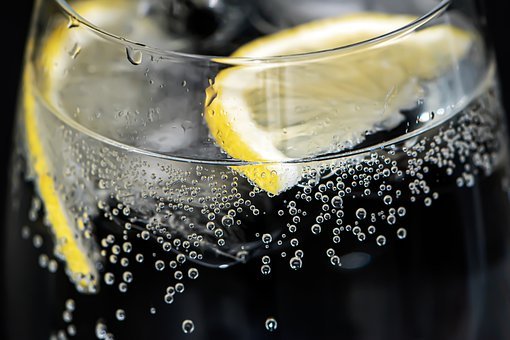
Try to match the colours as closely as possible. It may be tempting to pile as much food as possible, but this will not appear good on camera. If there is too much food on the plate, it will be difficult for the audience to focus on the key parts. Put sufficient space just on the table for the viewers to appreciate the food, as food photography is all about simplicity.
Less is more in this case.
That is all that you need to know about Commercial food Photography.
If you need more interesting tips on Food Photography, please visit our website: Food Photography in Mumbai.
If you are interested in food photography courses and wanted to get deeper into food photography and become a professional food photographer or food bloggers, then you can definitely go through our series of food photography blogs. We have a lot to share with you.
If you need further tips or wish to learn more about commercial food photography, give us a call or leave a mail.
